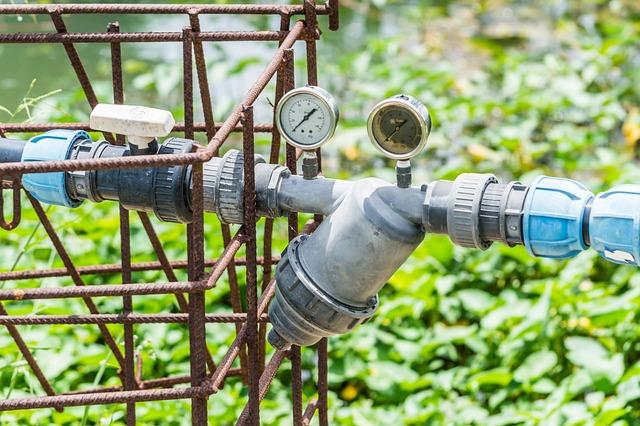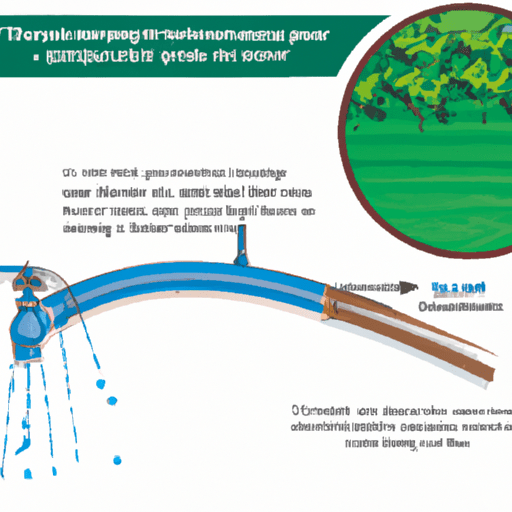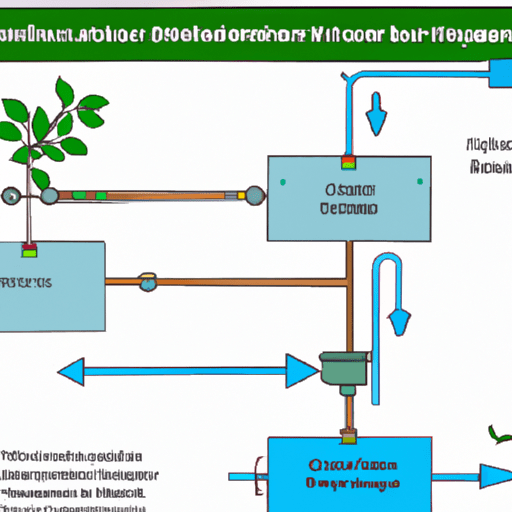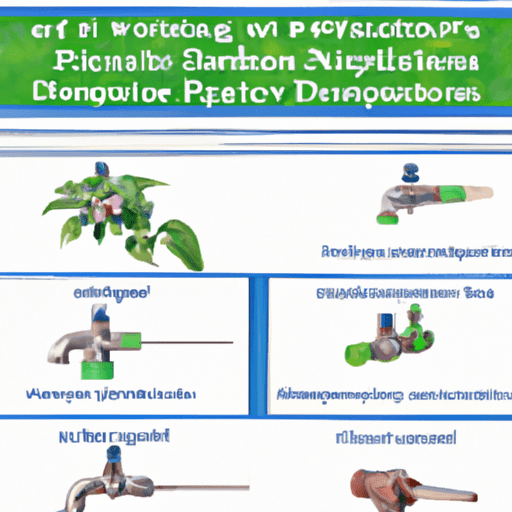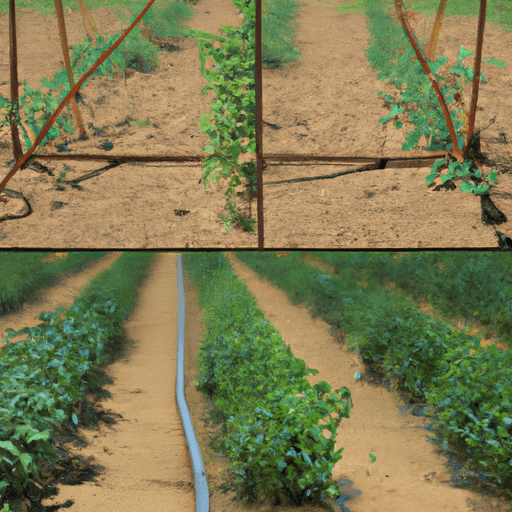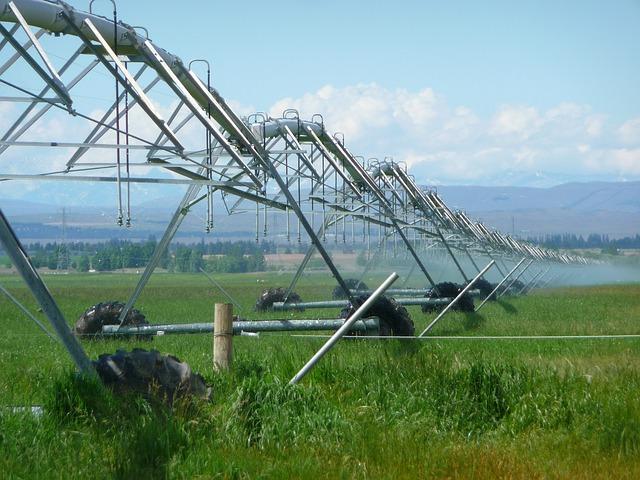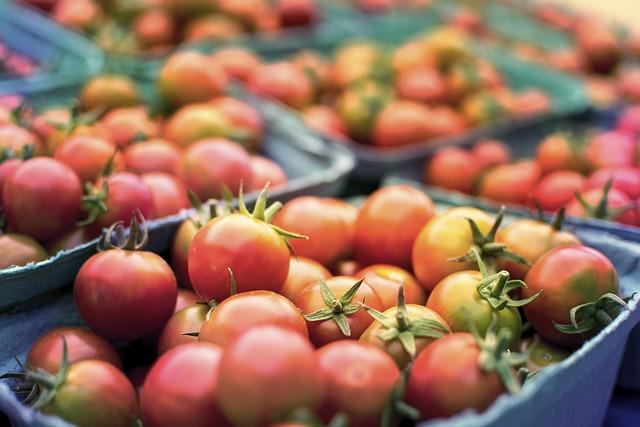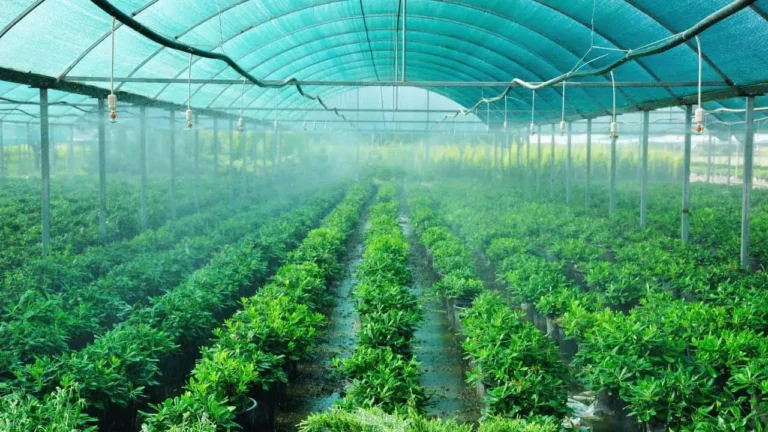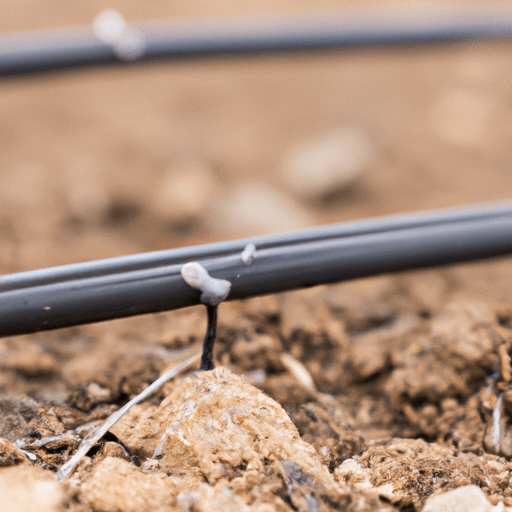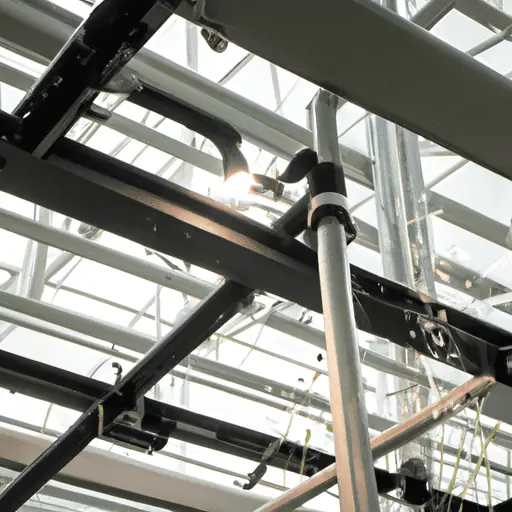This professional guide provides a comprehensive approach to designing an efficient drip irrigation system. It covers key considerations to account for, systematic steps to follow for design, tips to boost efficiency, and common pitfalls to sidestep in irrigation design. The guide is especially tailored for those who wish to optimize water utilization and enhance their crop yield.
1. Understanding the Importance of Drip Irrigation: Why Bother?
Drip irrigation is a method of watering plants by delivering water directly to the root zone, drop by drop. This targeted approach ensures that plants receive the right amount of water they need, minimizing water wastage and promoting efficient water usage.
One of the main reasons why drip irrigation is important is its water-saving capability. Traditional irrigation methods, such as sprinklers or flood irrigation, can lead to significant water loss due to evaporation, runoff, and overspray. In contrast, drip irrigation delivers water directly to the plants' roots, reducing water loss and maximizing water efficiency. This is especially crucial in areas prone to drought or facing water scarcity, where every drop counts.
Additionally, drip irrigation helps prevent weed growth and disease. By delivering water directly to the root zone, the surrounding soil remains dry, making it less favorable for weed seeds to germinate. Furthermore, overhead watering methods can increase the humidity around plant foliage, creating a favorable environment for disease development. Drip irrigation minimizes foliage wetness, reducing the risk of diseases like mildew or leaf spot.
Another advantage of drip irrigation is its ability to deliver water slowly and evenly, allowing plants to absorb moisture at their own pace. This promotes healthier root development and minimizes the risk of overwatering or underwatering. By providing the right amount of water directly to the plants' roots, drip irrigation helps to maintain soil moisture levels, ensuring optimal plant growth and yield.
In addition to water conservation and plant health benefits, drip irrigation also offers time-saving advantages. Once properly installed, a drip irrigation system can be automated and controlled by a timer, eliminating the need for manual watering. This allows gardeners and farmers to focus on other important tasks while ensuring their plants receive the necessary water.
1. An illustration demonstrating the importance of drip irrigation in water conservation and crop yield.
2. Factors to Consider When Designing a Drip Irrigation System
When designing a drip irrigation system, several factors need to be taken into consideration to ensure its efficiency and effectiveness.
First, it is essential to assess the water source and availability. Determine the water pressure and flow rate of the source, as these factors will impact the design and layout of the system. Additionally, consider the water quality and any potential contaminants that may require additional filtration or treatment.
Secondly, consider the specific needs of the plants being irrigated. Different plants have varying water requirements, so it is important to design the system accordingly. Consider factors such as plant size, root depth, and growth stage. Grouping plants with similar water needs together can help optimize water usage and ensure each plant receives the appropriate amount of water.
The layout and spacing of the drip lines should also be carefully planned. Factors such as slope, soil type, and plant density should be considered to determine the optimal placement of the drip lines. Avoid placing the lines too close to plant stems, as this can lead to excess moisture around the roots and potential rotting.
Additionally, consider the climatic conditions of the area. Take into account factors such as temperature, humidity, and wind patterns. These factors can affect the evaporation rate and water requirements of the plants. Adjustments may need to be made to the system, such as increasing the frequency of watering during hot and dry periods.
Finally, consider the maintenance and accessibility of the system. Ensure that the system is designed in a way that allows for easy inspection, repairs, and adjustments. Plan for the installation of filters, pressure regulators, and valves to control and maintain the system effectively.
3. 'Every drop counts' – Steps to Design an Efficient Drip Irrigation System
Designing an efficient drip irrigation system involves several steps that ensure optimal water distribution and minimize water waste.
First, start by measuring and mapping the area to be irrigated. This includes determining the total area, identifying any obstacles or uneven terrain, and marking the location of plants or crop rows. This information will help determine the layout and placement of the drip lines.
Next, calculate the water requirements of the plants. This can be done by considering factors such as plant type, size, and growth stage. Use this information to estimate the flow rate and duration of irrigation needed for each plant or group of plants.
After determining the water requirements, choose the appropriate drip line and emitters. Consider factors such as flow rate, spacing, and pressure compensation to ensure uniform water distribution. Selecting high-quality materials will also contribute to the longevity and efficiency of the system.
Once the drip lines and emitters are chosen, plan the layout and spacing. Consider the water requirements of the plants, as well as the area's topography and soil conditions. Proper spacing will ensure adequate coverage and prevent over- or under-watering.
After planning the layout, install the drip lines and emitters according to the design. Ensure that the lines are securely connected and properly positioned around the plants. Check regularly for any leaks or blockages and address them promptly.
Finally, set up a reliable irrigation schedule. Consider factors such as the time of day, weather conditions, and plant needs. It is important to provide consistent and adequate irrigation without wasting water. Using a timer or automated system can help ensure accurate and efficient watering.
3. A step-by-step flowchart depicting the process of designing an efficient drip irrigation system.
4. Maximizing Efficiency in Drip Irrigation: How to Get the Most Out of Every Drop?
To get the most out of every drop in a drip irrigation system, there are several strategies you can implement. By focusing on proper system maintenance, scheduling, and monitoring, you can ensure optimal efficiency.
- 1. Regular Maintenance:
Regularly inspect and maintain your drip irrigation system to prevent leaks, clogs, or other issues that can waste water. Check for any damaged or worn-out components and replace them as needed. Clean the filters regularly to prevent clogging and ensure proper water flow. Trim any plants or vegetation that may obstruct the drippers to maintain optimal water distribution. - 2. Efficient Scheduling:
Develop an irrigation schedule that takes into account the specific needs of your plants and the local weather conditions. Consider factors such as plant type, growth stage, and soil moisture levels. Avoid overwatering by scheduling irrigation sessions for when the plants actually need water. Using soil moisture sensors or weather-based irrigation controllers can help automate this process and ensure efficient water usage. - 3. Monitoring and Adjusting:
Regularly monitor the performance of your drip irrigation system. Check for any signs of under or over-watering, such as wilting or water runoff. Adjust the flow rate and duration of irrigation as needed to meet the changing water requirements of the plants. Pay attention to any changes in the landscape or plant growth that may require adjustments to the system layout or emitter placement.
5. Common Mistakes to Avoid in Drip Irrigation Design: What Not to Do?
When designing a drip irrigation system, it is important to be aware of common mistakes that can hinder its efficiency. By avoiding these mistakes, you can ensure that your system functions optimally and delivers water effectively to your plants.
- 1. Inadequate Planning and Design:
One common mistake is failing to properly plan and design the drip irrigation system. This includes not accurately measuring the area to be irrigated, not considering the water requirements of the plants, and not accounting for potential future growth or changes in the landscape. Inadequate planning can lead to uneven water distribution, inadequate coverage, and inefficient water usage. - 2. Incorrect Emitter Placement:
Emitter placement is crucial in drip irrigation. Placing emitters too close together can lead to overwatering, while placing them too far apart can result in uneven water distribution and under-watering. It is important to follow the manufacturer's recommendations for emitter spacing and consider the needs of your specific plants. Additionally, make sure the emitters are placed near the root zone of the plants to ensure efficient water uptake. - 3. Insufficient Filter and Pressure Regulation:
Neglecting to install proper filters and pressure regulators can lead to clogging and uneven water flow. Without a filter, debris and sediment can accumulate in the system, leading to blockages. Similarly, without pressure regulation, the system may experience fluctuations in water pressure, affecting the distribution of water. It is essential to install appropriate filters and pressure regulators to maintain a clean and consistent water flow.
5. A list of common mistakes and corresponding solutions in drip irrigation design depicted with relevant images.
6. Maintenance of a Drip Irrigation System: How to Ensure Long-Term Efficiency?
Regular maintenance is essential for ensuring the long-term efficiency of a drip irrigation system. By following these key steps, you can keep your system in optimal condition and avoid potential issues that may arise over time.
- 1. Cleaning and Flushing:
Regularly clean and flush your drip irrigation system to prevent clogging and ensure proper water flow. This involves removing any debris or sediment that may accumulate in the filters, emitters, and tubing. Inspect the system for any blockages and clean or replace any clogged emitters or filters as needed. Flushing the system with clean water helps remove any accumulated dirt or particles that may hinder water flow. - 2. Check for Leaks:
Regularly inspect your drip irrigation system for leaks. Leaks can lead to water waste and inefficient watering. Check all connections, joints, and fittings for any signs of leakage. If you notice any leaks, repair or replace the affected components promptly to prevent further water loss and maintain the system's efficiency. - 3. Adjust and Maintain Water Pressure:
Maintaining proper water pressure is crucial for the efficient operation of a drip irrigation system. Periodically check the water pressure and adjust it as needed to ensure that it falls within the recommended range for your specific system and plants. Use pressure regulators to maintain a consistent and appropriate water pressure level. Fluctuations in water pressure can lead to uneven water distribution and inefficient watering.
7. 'Water is the driving force of all nature' – The Impact of an Efficient Drip Irrigation System
An efficient drip irrigation system has a profound impact on water conservation, plant health, and overall environmental sustainability. By delivering water directly to the root zone of plants, drip irrigation minimizes water loss through evaporation and runoff. This targeted approach ensures that plants receive the necessary moisture while reducing water waste.
One of the significant advantages of a drip irrigation system is its ability to conserve water. Compared to traditional irrigation methods, such as sprinklers, drip irrigation can save up to 50% of water usage. This not only helps preserve our precious water resources but also reduces water bills for homeowners and farmers.
Furthermore, an efficient drip irrigation system promotes plant health. By delivering water at a slow and steady rate, it prevents overwatering or underwatering, which can stress plants and lead to diseases. The consistent moisture provided by drip irrigation promotes healthy root development, stronger plants, and increased crop yields.
In addition to water conservation and plant health, an efficient drip irrigation system contributes to environmental sustainability. By reducing water usage, it helps mitigate the strain on local water sources and ecosystems. It also minimizes the need for chemical fertilizers and pesticides, as it reduces the risk of runoff and leaching. This eco-friendly approach promotes a healthier environment and supports sustainable agriculture practices.
Finally, an efficient drip irrigation system can have economic benefits. By conserving water and promoting plant health, it can lead to cost savings for farmers, landscapers, and homeowners. Additionally, it helps save time and labor by automating the watering process and providing precise water distribution.
7. A comparative image showcasing the impact of an efficient drip irrigation system on crop yield and water conservation.
Design Considerations for an Efficient Drip Irrigation System:
| Steps | Benefits | Tips | Pitfalls |
|---|---|---|---|
| 1. Select the type of drip irrigation system | Reduced water waste and optimized crop yield | Choose a system that is suitable for the area's climate | Incorrect sizing resulting in under- or over-watering |
| 2. Measure the area to be irrigated | Accurate system design | Allow for some extra length to account for slight variations in terrain | Over-estimating the area to be irrigated |
| 3. Calculate water flow requirements | Efficient water use | Check the manufacturer's specs for the type of system chosen | Incorrect calculations leading to insufficient water flow |
| 4. Choose the correct components | Optimum performance | Choose components that are compatible with the system | Incompatible components leading to system failure |
Designing an efficient drip irrigation system is a meticulous process that requires careful planning, understanding of your landscape and plant requirements, and a strategic approach. By considering all the factors mentioned in this guide and avoiding the common mistakes, you can create a system that maximizes water efficiency and boosts your crop yield. Remember, the key to a successful drip irrigation system lies in its design, implementation, and maintenance.

